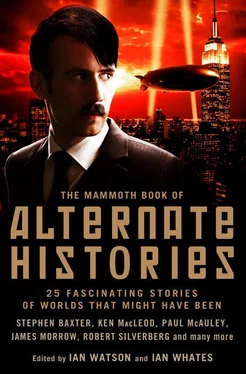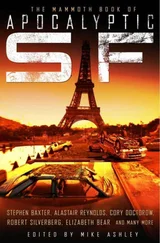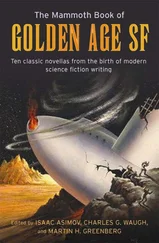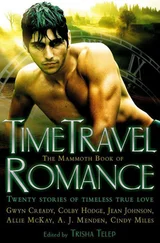The tally is heartening. Assuming that frugality rules aboard the Ada — and it will, so help me God — she probably has enough food and water to sustain her population, all 2,187 of us, for at least ten days. We have two functioning compasses, three brass sextants, four thermometers, one barometer, one anemometer, fishing tackle, sewing supplies, baling wire, and twenty tarpaulins, not to mention the wood-fuelled Franklin stove Mr Lightoller managed to knock together from odd bits of metal.
Yesterday’s attempt to rig a sail was a fiasco, but this afternoon we had better luck, improvising a gracefully curving thirty-foot mast from the banister of the grand staircase, then fitting it with a patchwork of velvet curtains, throw rugs, signal flags, men’s dinner jackets, and ladies’ skirts. My mind is clear, my strategy is certain, my course is set. We shall tack towards warmer waters, lest we lose more souls to the demonic cold. If I never see another ice floe or North Atlantic growler in my life, it will be too soon.
18 April 1912
Lat. 37°11’N, Long. 52°11’ W
Whilst everything is still vivid in my mind, I must set down the story of how the Ada came into being, starting with the collision. I felt the tremor about 11.40 p.m., and by midnight Mr Lightoller was in my cabin, telling me that the berg had sliced through at least five adjacent watertight compartments, possibly six. To the best of his knowledge, the ship was in the last extremity, fated to go down at the head in a matter of hours.
After assigning Mr Moody to the bridge — one might as well put a sixth officer in charge, since the worst had already happened — Captain Smith sent word that the rest of us should gather post-haste in the chartroom. By the time I arrived, at perhaps five minutes past midnight, Mr Andrews, who’d designed the Titanic, was already seated at the table, along with Mr Bell, the chief engineer, Mr Hutchinson, the ship’s carpenter, and Dr O’Loughlin, our surgeon. Taking my place beside Mr Murdoch, who had not yet reconciled himself to the fact that my last-minute posting as chief officer had bumped him down to first mate, I immediately apprehended that the ship was lost, so palpable was Captain Smith’s anxiety.
“Even as we speak, Phillips and Bride are on the job in the wireless shack, trying to raise the Californian , which can’t be more than an hour away,” the Old Man said. “I am sorry to report that her Marconi operator has evidently shut off his rig for the night. However, we have every reason to believe that Captain Rostron of the Carpathia will be here within four hours. If this were the tropics, we would simply put the entire company in lifebelts, lower them over the side, and let them bob about waiting to be rescued. But this is the North Atlantic, and the water is twenty-eight degrees Fahrenheit.”
“After a brief interval in that ghastly gazpacho, the average mortal will succumb to hypothermia,” said Mr Murdoch, who liked to lord it over us Scousers with fancy words such as succumb and gazpacho. “Am I correct, Dr O’Loughlin?”
“A castaway who remains motionless in the water risks dying immediately of cardiac arrest,” the surgeon replied, nodding. “Alas, even the most robust athlete won’t generate enough body heat to prevent his core temperature from plunging. Keep swimming, and you might last twenty minutes, probably no more than thirty.”
“Now I shall tell you the good news,” the Old Man said. “Mr Andrews has a plan, bold but feasible. Listen closely. Time is of the essence. The Titanic has at best one hundred and fifty minutes to live.”
“The solution to this crisis is not to fill the lifeboats to capacity and send them off in hopes of encountering the Carpathia, for that would leave over a thousand people stranded on a sinking ship,” Mr Andrews insisted. “The solution, rather, is to keep every last soul out of the water until Captain Rostron arrives.”
“Mr Andrews has stated the central truth of our predicament,” Captain Smith said. “On this terrible night our enemy is not the ocean depths, for owing to the lifebelts no one — or almost no one — will drown. Nor is the local fauna our enemy, for sharks and rays rarely visit the middle of the North Atlantic in early spring. No, our enemy tonight is the temperature of the water, pure and simple, full stop.”
“And how do you propose to obviate that implacable fact?” Mr Murdoch inquired. The next time he used the word obviate, I intended to sock him in the chops.
“We’re going to build an immense platform,” said Mr Andrews, unfurling a sheet of drafting paper on which he’d hastily sketched an object labelled Raft of the Titanic. He secured the blueprint with ashtrays and, leaning across the table, squeezed the chief engineer’s knotted shoulder. “I designed it in collaboration with the estimable Mr Bell” — he flashed our carpenter an amiable wink — “and the capable Mr Hutchinson.”
“Instead of loading anyone into our fourteen standard thirty-foot lifeboats, we shall set aside one dozen, leave their tarps in place, and treat them as pontoons,” Mr Bell said. “From an engineering perspective, this is a viable scheme, for each lifeboat is outfitted with copper buoyancy tanks.”
Mr Andrews set his open palms atop the blueprint, his eyes dancing with a peculiar fusion of desperation and ecstasy. “We shall deploy the twelve pontoons in a three-by-four grid, each linked to its neighbours via horizontal stanchions spliced together from available wood. Our masts are useless — mostly steel — but we’re hauling tons of oak, teak, mahogany and spruce.”
“With any luck, we can affix a twenty-five-foot stanchion between the stern of pontoon A and the bow of pontoon B,” Mr Hutchinson said, “another such bridge between the amidships oarlock of A and the amidships oarlock of E, another between the stern of B and the bow of C, and so on.”
“Next we’ll cover the entire matrix with jettisoned lumber, securing the planks with nails and rope,” Mr Bell said. “The resulting raft will measure roughly one hundred feet by two hundred, which technically allows each of our two thousand plus souls almost nine square feet, though in reality everyone will have to share accommodations with foodstuffs, water casks, and survival gear, not to mention the dogs.”
“As you’ve doubtless noticed,” Mr Andrews said, “at this moment the North Atlantic is smooth as glass, a circumstance that contributed to our predicament — no wave broke against the iceberg, so the lookouts spotted the bloody thing too late. I am proposing that we now turn this same placid sea to our advantage. My machine could never be assembled in high swells, but tonight we’re working under conditions only slightly less ideal than those that obtain back at the Harland and Wolff shipyard.”
Captain Smith’s moustache and beard parted company, a great gulping inhalation, whereupon he delivered what was surely the most momentous speech of his career.
“Step one is for Mr Wilde and Mr Lightoller to muster the deck crew and have them launch all fourteen standard lifeboats — forget the collapsibles and the cutters — each craft to be rowed by two able-bodied seamen assisted where feasible by a quartermaster, boatswain, lookout, or master-at-arms. Through this operation we get our twelve pontoons in the water, along with two roving assembly craft. The AB’s will forthwith moor the pontoons to the Titanic’ s hull using davit ropes, keeping the lines in place until the raft is finished or the ship sinks, whichever comes first. Understood?”
I nodded in assent, as did Mr Lightoller, even though I’d never heard a more demented idea in my life. Next the Old Man waved a scrap of paper at Mr Murdoch, the overeducated genius whose navigational brilliance had torn a three-hundred-foot gash in our hull.
Читать дальше












